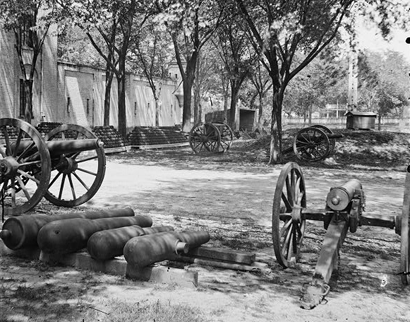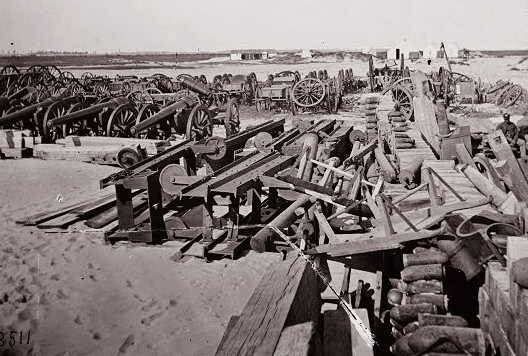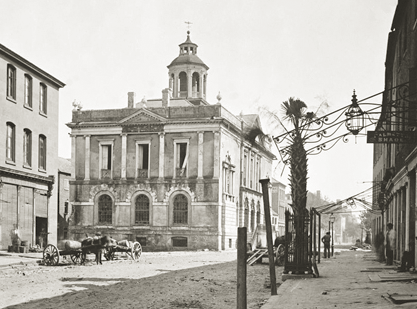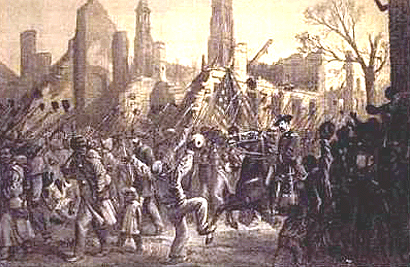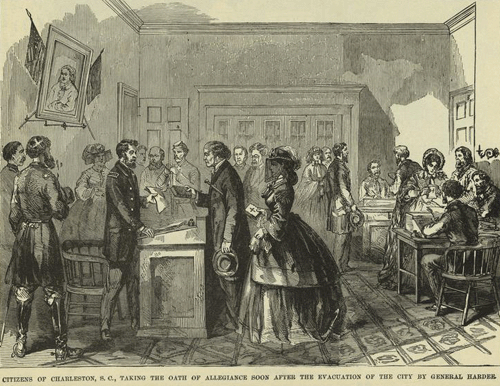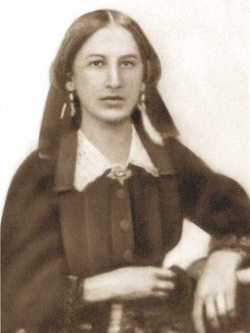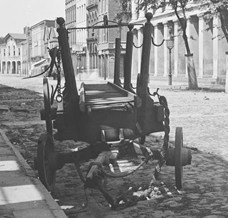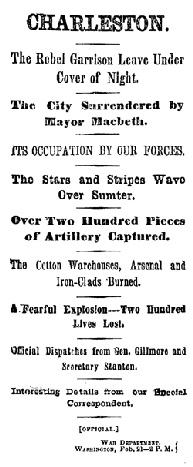|
Accounts state generally that around 150 civilians were killed from the blast and the fire, and another 100 were badly wounded. Elizabeth Skipper Suder, 25, died in the blast. She was the daughter of Hugh and Mary Norwood Skipper, and of Native American descent. She married William Henry Suder in 1859, and gave birth to two sons, William Hugh and John Henry Suder, in 1860 and 1862. The Suders continued to live in the northern wards of Charleston throughout the war even though most residents left for safer ground.
Several military histories report that almost all of the Confederate troops had left the city by midnight, and that the depot exploded around three o’clock in the morning. The original source of these reports are not yet known, but they do not agree with any eyewitness accounts and the timing does not fit with the facts. It is the only source, combined with histories based on these records, such as the History of the Great Rebellion, that report this as happening much earlier.
“About midnight the enemy fired the upper part of the city, burning up the railroad buildings and several thousand bales of cotton,” states Thomas Prentice Kettell in History of the Great Rebellion, based mostly on southern military records. “The buildings contained, besides the cotton, a large quantity of rice and 200 kegs of powder. About half-past three the powder blew up with a terrific explosion, killing or mutilating about 100 of the poor people, who were getting the rice. At daylight the rebel rams in the harbor, near the city, were blown up.”
Newspapers throughout the South and North reported the event as best as rumors and other newspaper accounts could tell. Both sides seemed intent to show that its own soldiers were not directly involved in the horrific tragedy at the Wilmington Depot. Nobody was willing to connect the destroyed depot with the orders to destroy everything of use to the Federals. The Charleston Courier first reported the details two days later, and set the tone for the series of stories and justifications that history would repeat to this day. The strange, contrived story would seem almost humorous if not in reference to such a deadly incident.
“It appears from all accounts that this dreadful catastrophe was caused from the careless handling of powder by boys taking handfuls and throwing it into the cotton fire at the depot,” reported the Courier [nobody at the time seemed concerned that the depot was on fire - much less that 200 kegs of gunpowder were stored there where children could find it at three in the morning according to the military]. “In doing this, they unwittingly laid a train [of powder] to the apartment in which it was stored.” Almost every Southern and Northern paper reported the events, including Harpers’ Weekly and the New York Times, and every time the story was retold it was augmented by new rumors and reports.
The following Monday the Atlanta Century reported that Charleston was captured, but did not include the depot at all. When Hardee evacuated Savannah two months earlier, he was accused of leaving too many useful supplies behind. “But this time,” the Atlanta Century stated, “Hardee managed to destroy considerable military supplies, cotton, and three ironclads.” Hardee retired Friday night, the Atlanta paper reported, “after destroying so much property that this ‘cradle of the Confederacy’ is described by a newsman as ‘a city of ruins - silent, mournful, in deepest humiliation.’”
“The city was now a scene of wild disorder, and we were to be still more humiliated,” wrote Pauline Dufort. “It was to be given up to the Federal authority. Quiet was at last restored. We had surrendered!” . The mayor of Charleston, Charles Macbeth, surrendered the city to the first high ranking Union officer to arrive, General Schimelfening, according to many reports. Others claim the city was surrendered to Colonel. A. G. Bennett, commander of the 21st U.S. Infantry, who entered the city from the wharfs nearest Morris Island which the Union controlled.
“He [Bennett] brought with him a note demanding Charleston’s surrender,” the Atlanta Century reported, “But the mayor had already sent a deputation to Morris Island to surrender the city.” Bennett’s regiment assisted in fighting the fires that civilian firemen could not contain. At 9:00 that morning, the United States flag was raised once again over Fort Sumter, and later in the day Rear Admiral John Dahlgren took official possession of the burning, ruined city.
“At ½ past eleven the Yankees entered the city,” wrote Cramer in his diary. “Their first boat landed behind the post office east of Broad St. The first I saw came up Wentworth St. about 150 in number.” Earlier, Union troops under General Schimelfening crossed the Ashley River west of the city and entered Charleston. They secured the United States Arsenal, much of the artillery, and many supplies before Confederates could finish destroying them. “If the Yankees had not come in so soon the arsenal [and] the Commissary Store in town running from Mary to Ann St. would have been burned and blown up by the confederates,” according to Cramer’s diary.
General Hardee sent a message to Beauregard on Sunday, February 19, from Kingstree that “Charleston was successfully evacuated Friday night and Saturday morning.” Over the next few days, many Confederate deserters were found hiding throughout the city. None of them wished to continue fighting, and all were taken as prisoners. One rebel officer told the Navy that the defenders started evacuating three weeks earlier, but the Navy chose not to believe him.
The troops Hardee evacuated from Savannah and Charleston, including the 5th South Carolina Volunteer Infantry, were transported north and went on to fight in North Carolina at Averysboro and Bentonville. Here Hardee led the very last charge made by the Confederacy. He survived, but his only son died at 16, one of the last soldiers killed in the war. Hardee and his men were surrendered to Sherman on April 26, 1865, eight weeks after the destruction of Northeastern’s Wilmington Depot. The war was over.
Pauline Dufort continued to live in Charleston after the war, and worked as a French and piano teacher in later years. Her memories were later republished in 1885 in the book, “Our Women in the War.” Adolf F. C. Cramer went on to become a director of the People’s Bank and president of Germania’s Savings and Loan in Charleston. He was active in politics, charities and business, serving as a commissioner of the Orphan House, starting several companies and serving as president of the Consumer’s Coal Company and the original Palmetto Brewing Company.
There is no surviving medical record as to the suffering that morning, and over the next several weeks only a very few in Charleston are listed as dying from burns. It is not known where the bodies of the dead are buried, and there is no memorial. There is no known resting place for Elizabeth Suder. The two young sons of Elizabeth and William Henry Suder were taken in by Elizabeth’s sister, Caroline, and her husband, Jim Meyers. But that did not last long. A year later when remaining funds ran out, William Hugh and John Henry Suder became inmates of Charleston’s Orphan House.
Jump to Page 1 | 2 | 3
|
